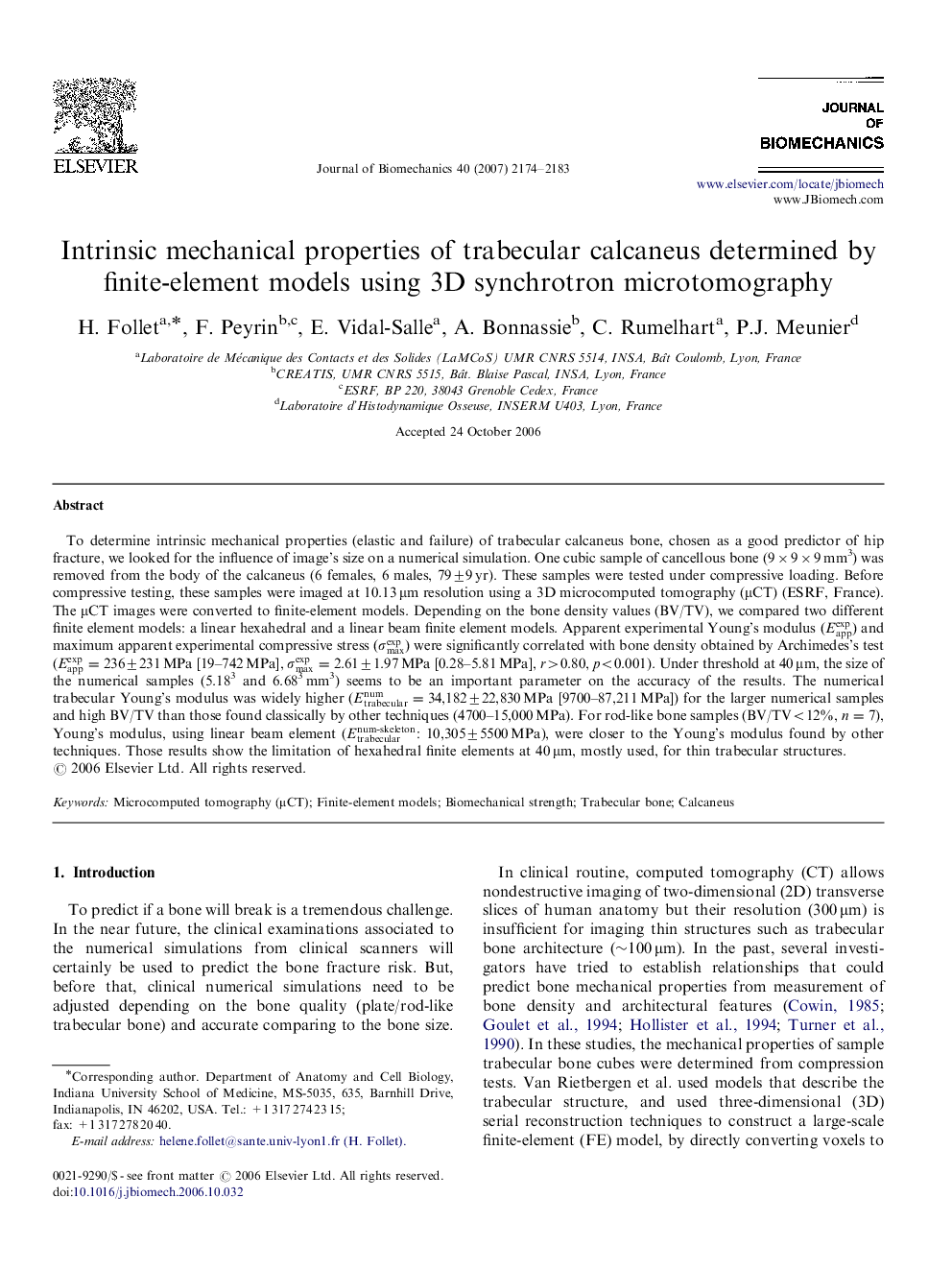| Article ID | Journal | Published Year | Pages | File Type |
|---|---|---|---|---|
| 874269 | Journal of Biomechanics | 2007 | 10 Pages |
To determine intrinsic mechanical properties (elastic and failure) of trabecular calcaneus bone, chosen as a good predictor of hip fracture, we looked for the influence of image's size on a numerical simulation. One cubic sample of cancellous bone (9×9×9 mm3) was removed from the body of the calcaneus (6 females, 6 males, 79±9 yr). These samples were tested under compressive loading. Before compressive testing, these samples were imaged at 10.13 μm resolution using a 3D microcomputed tomography (μCT) (ESRF, France). The μCT images were converted to finite-element models. Depending on the bone density values (BV/TV), we compared two different finite element models: a linear hexahedral and a linear beam finite element models. Apparent experimental Young's modulus (Eappexp) and maximum apparent experimental compressive stress (σmaxexp) were significantly correlated with bone density obtained by Archimedes's test (Eappexp=236±231 MPa [19–742 MPa], σmaxexp=2.61±1.97 MPa [0.28–5.81 MPa], r>0.80, p<0.001). Under threshold at 40 μm, the size of the numerical samples (5.183 and 6.683 mm3) seems to be an important parameter on the accuracy of the results. The numerical trabecular Young's modulus was widely higher (Etrabecularnum=34,182±22,830 MPa [9700–87,211 MPa]) for the larger numerical samples and high BV/TV than those found classically by other techniques (4700–15,000 MPa). For rod-like bone samples (BV/TV<12%, n =7), Young's modulus, using linear beam element (Etrabecularnum‐skeleton: 10,305±5500 MPa), were closer to the Young's modulus found by other techniques. Those results show the limitation of hexahedral finite elements at 40 μm, mostly used, for thin trabecular structures.
